
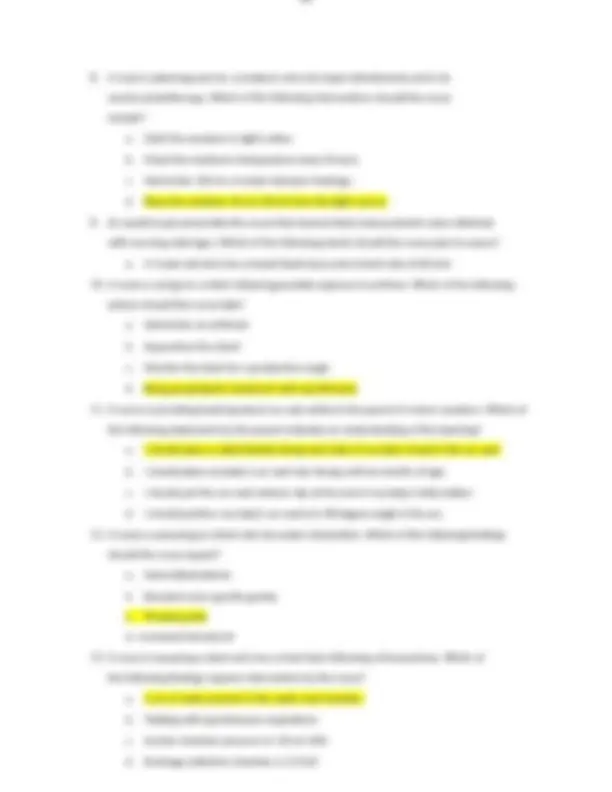
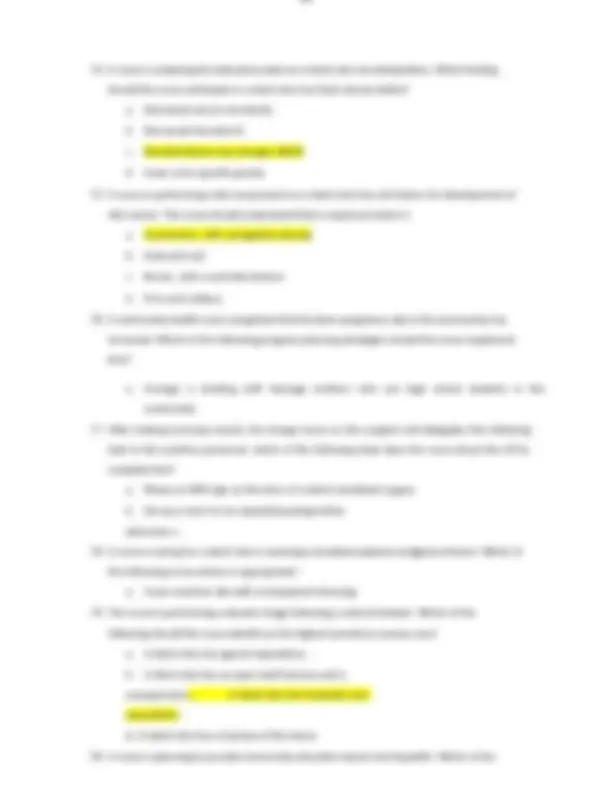
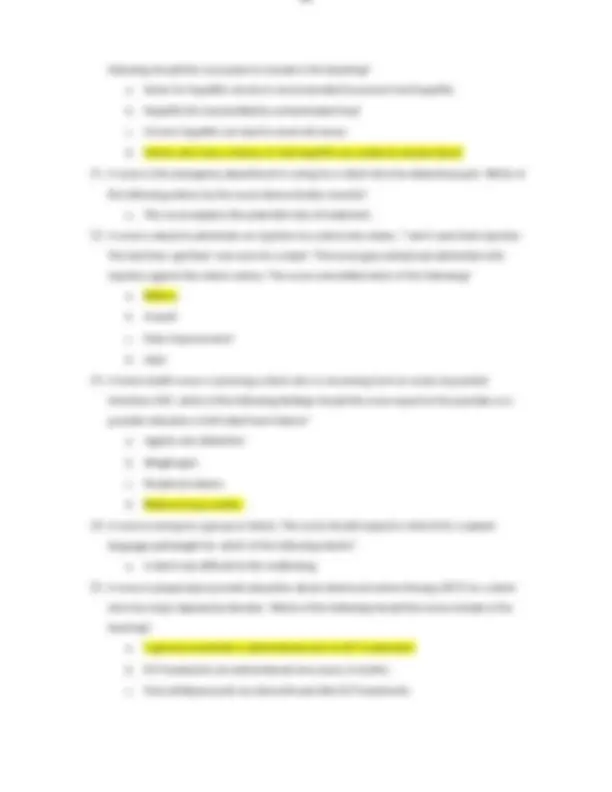
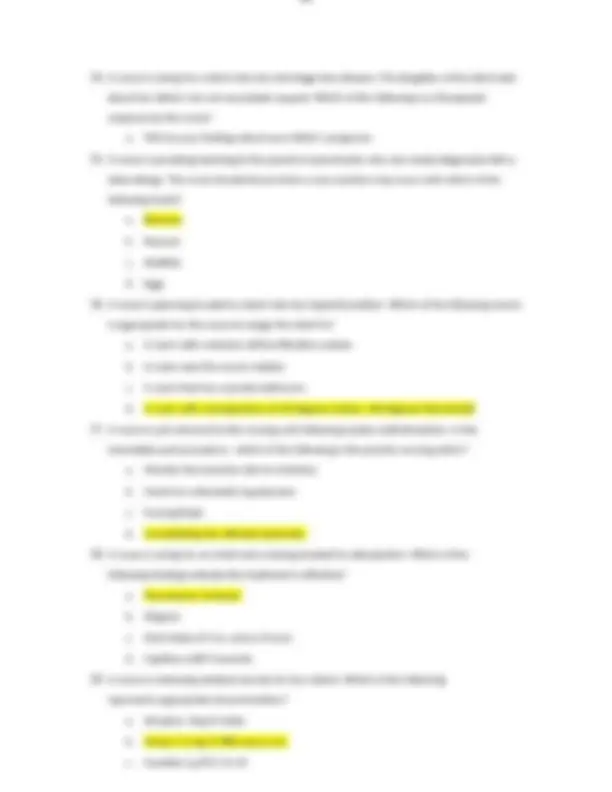
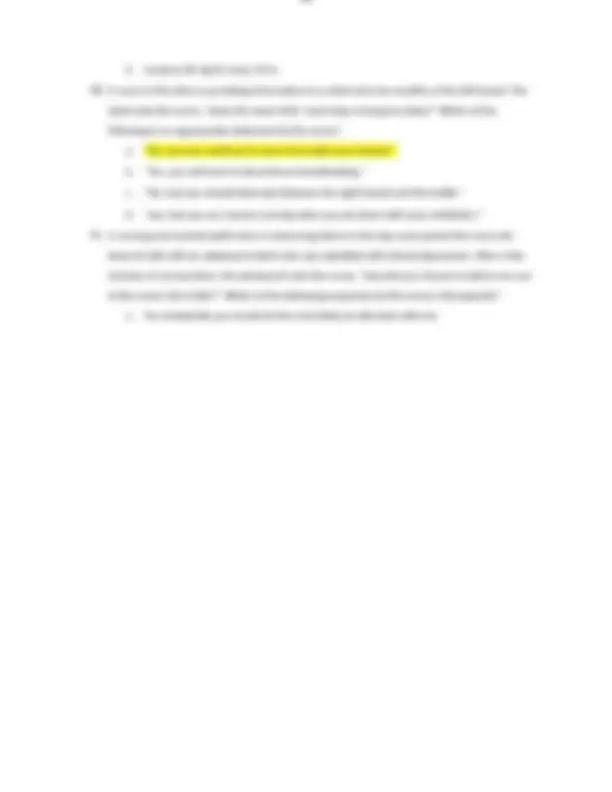
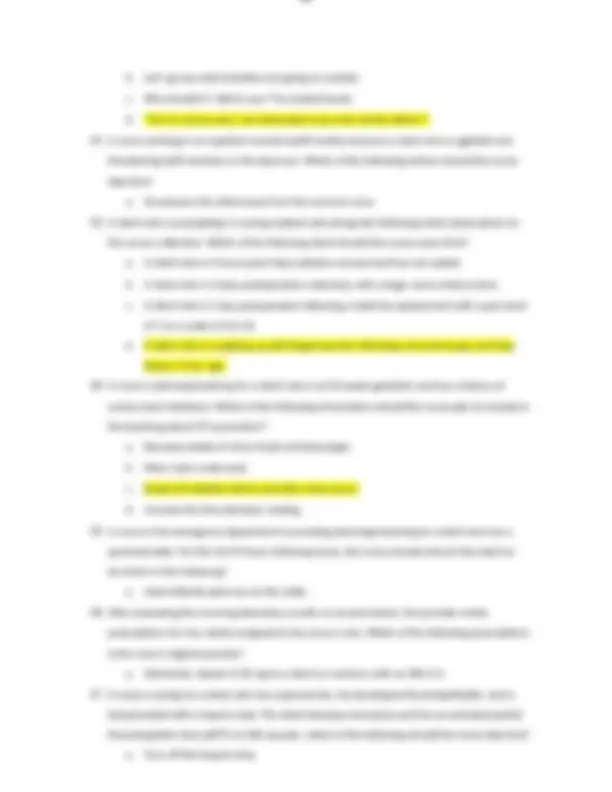
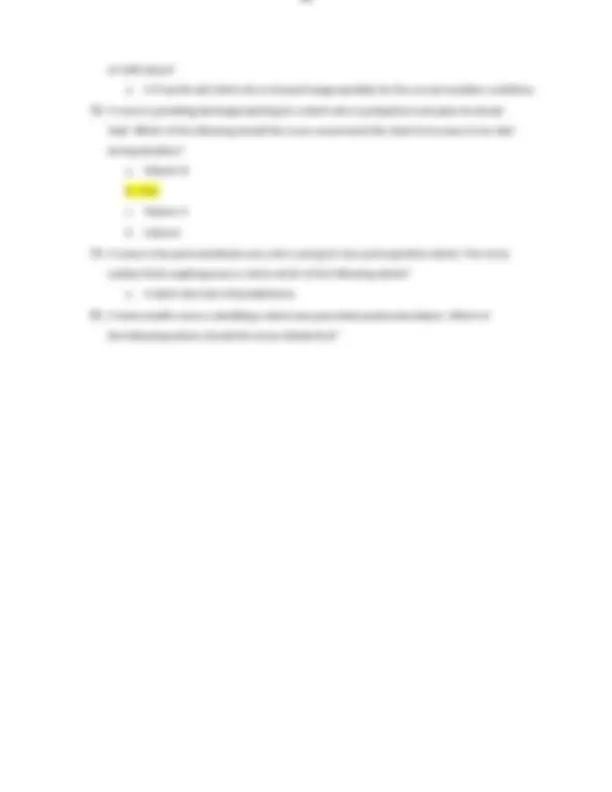
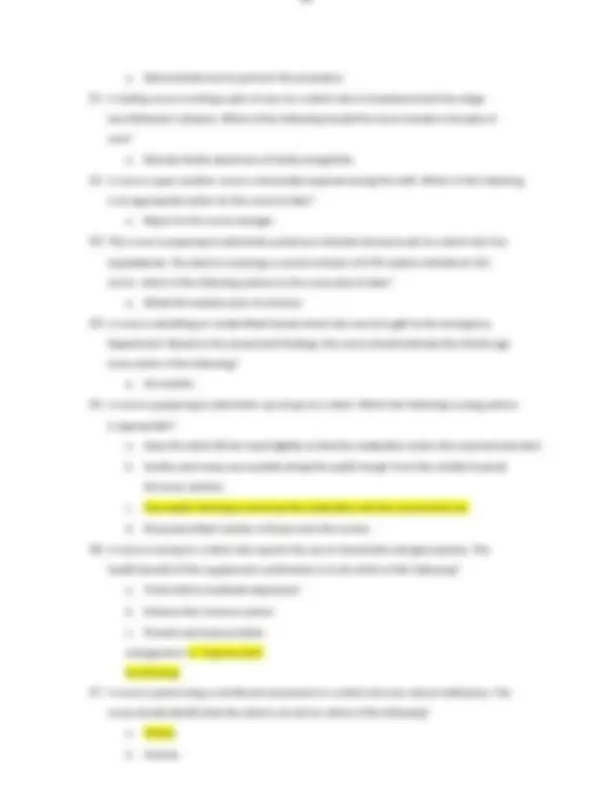
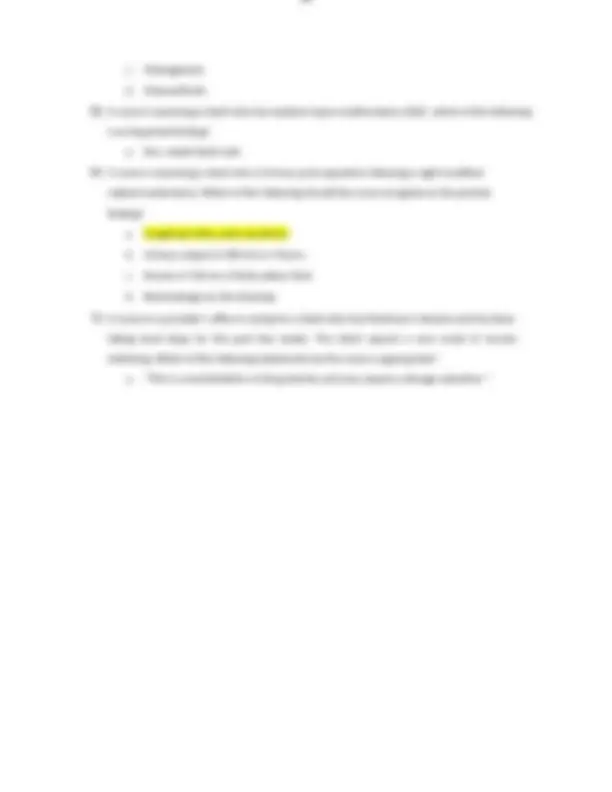
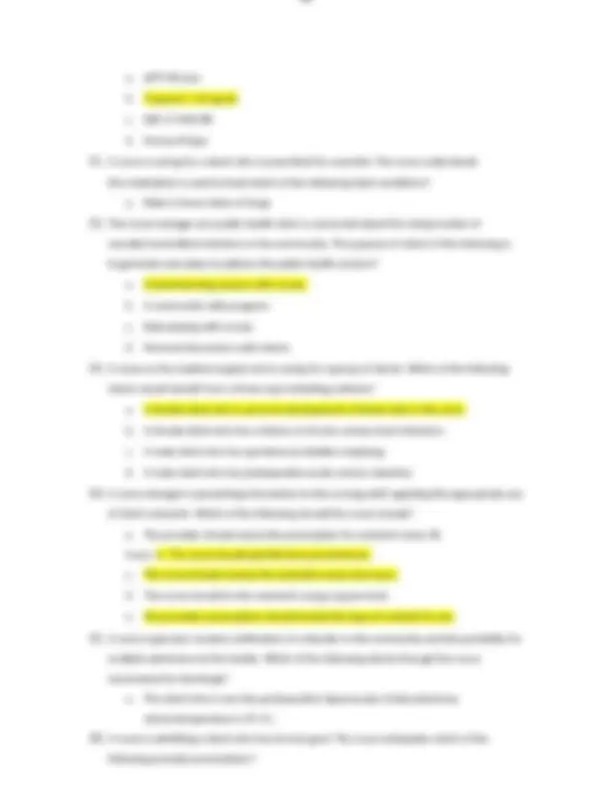
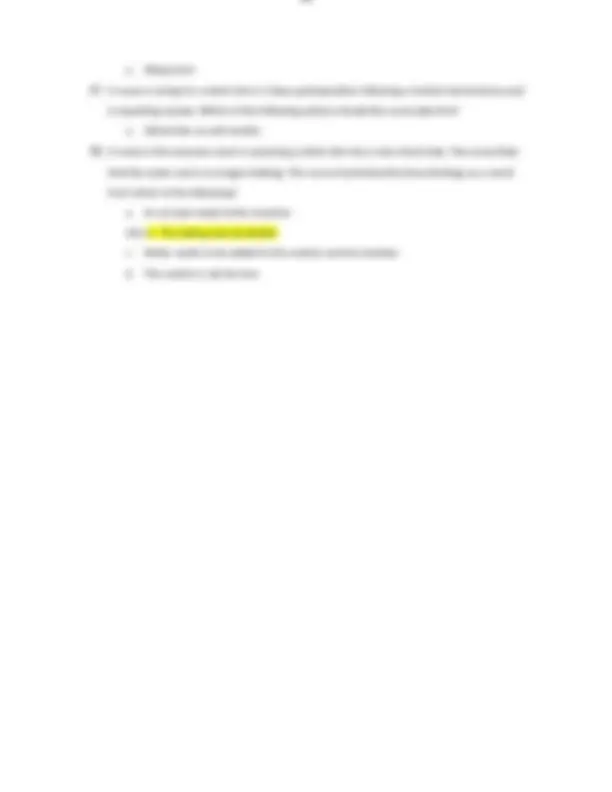
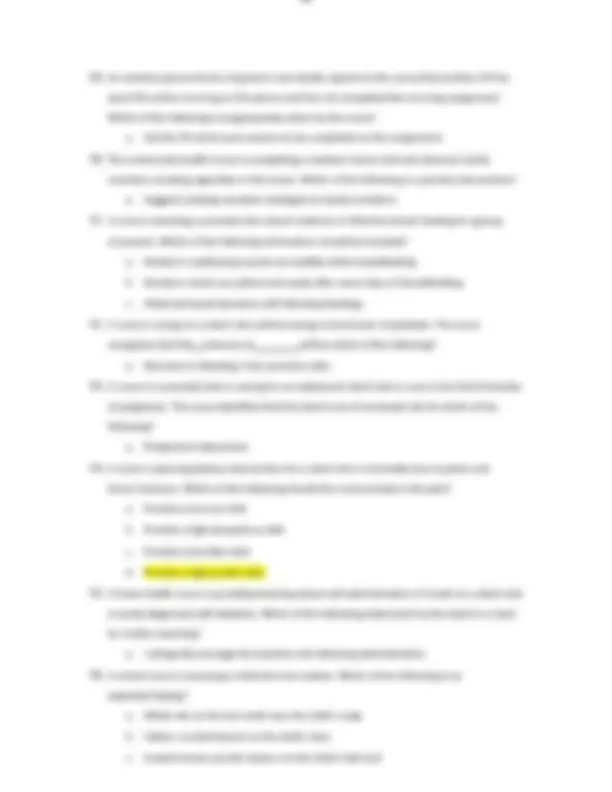
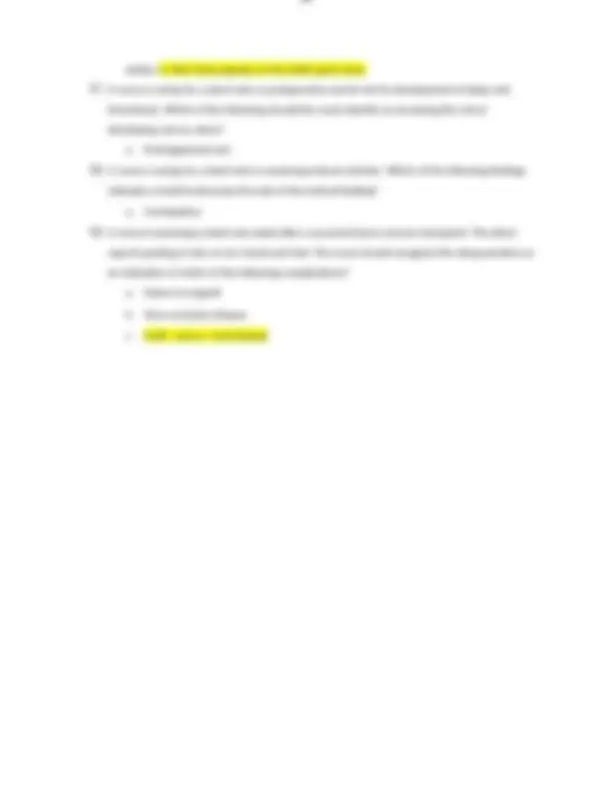
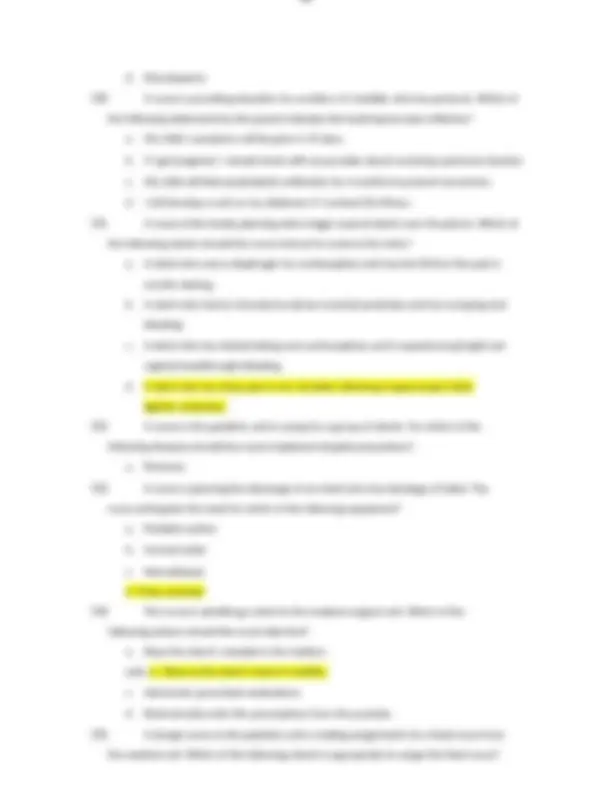
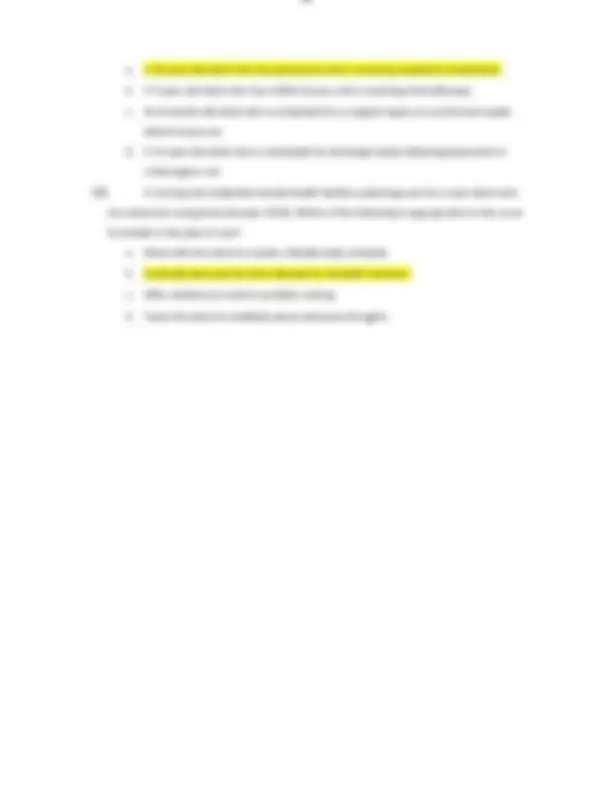
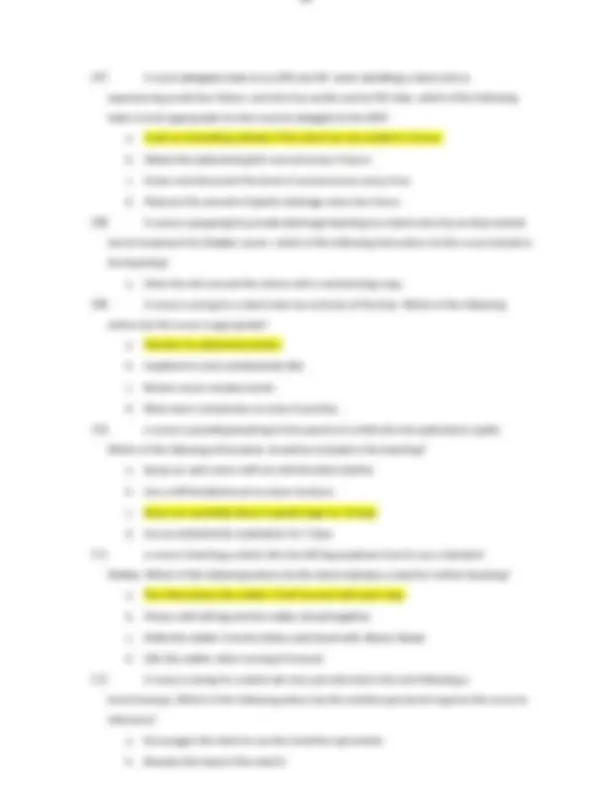
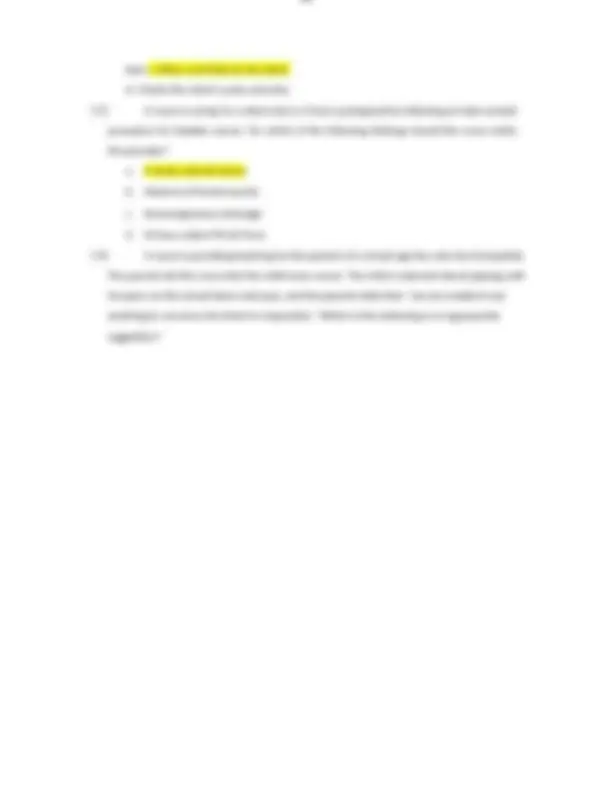
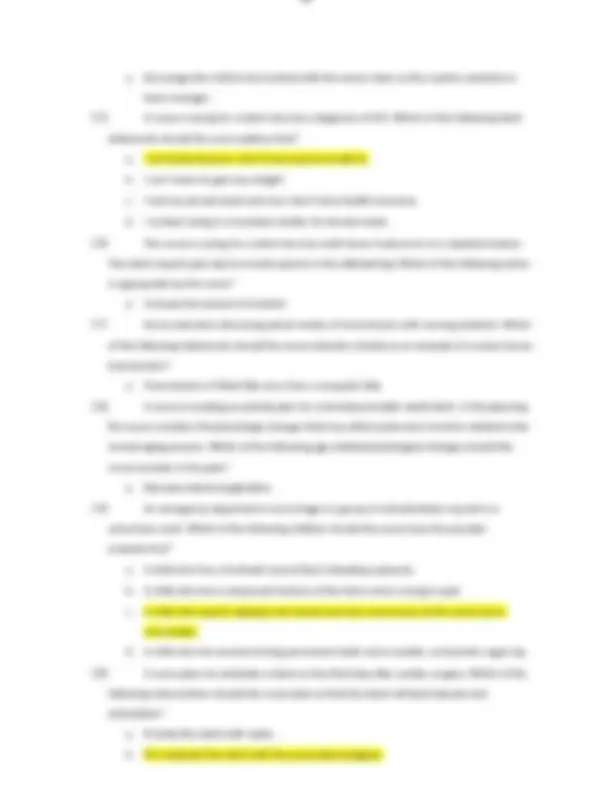
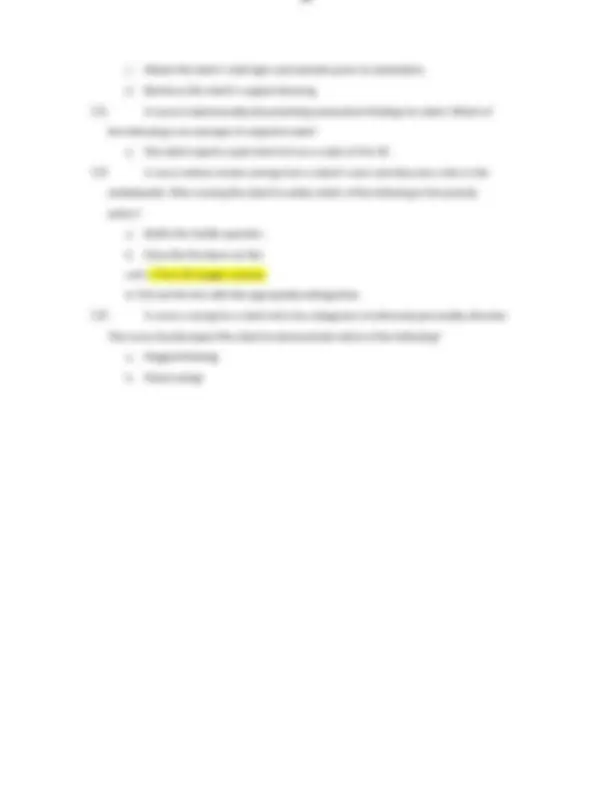
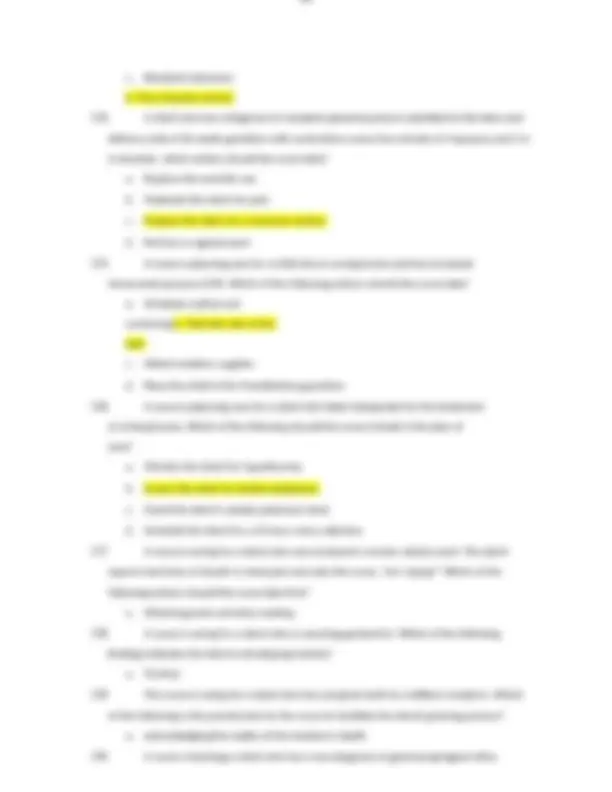
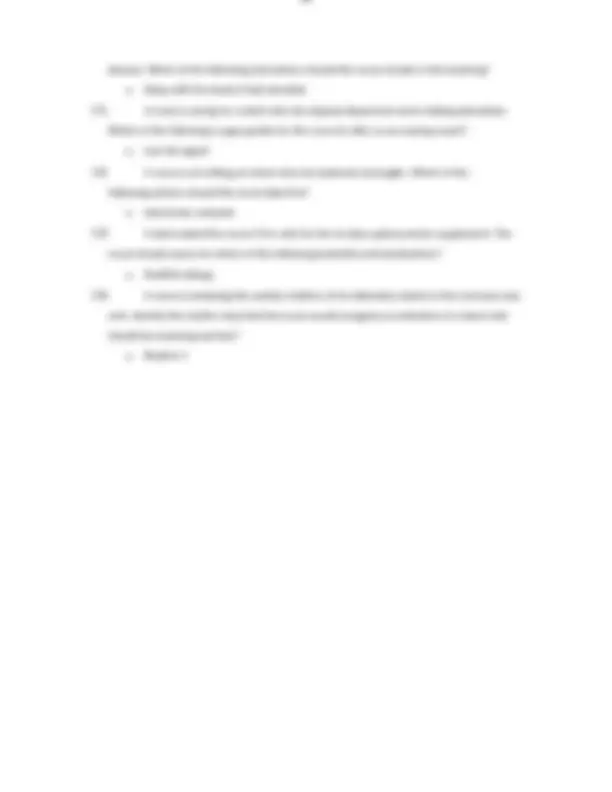
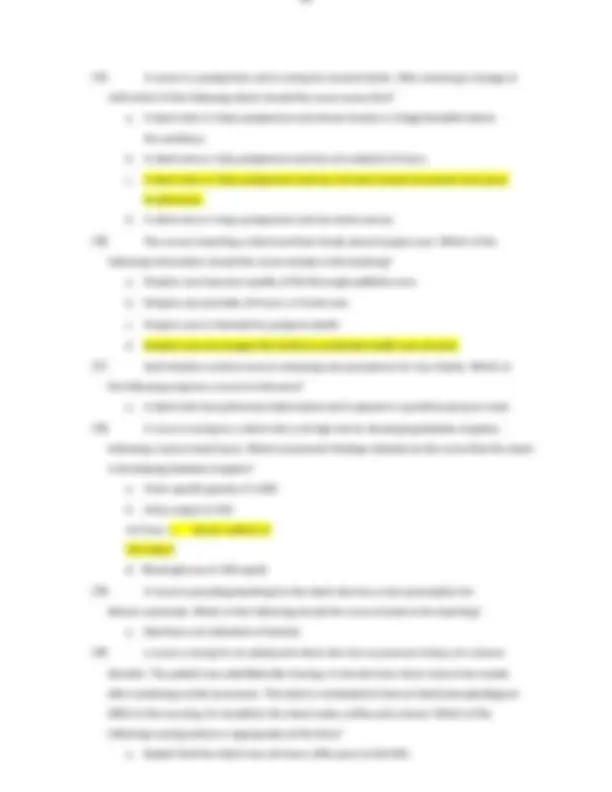

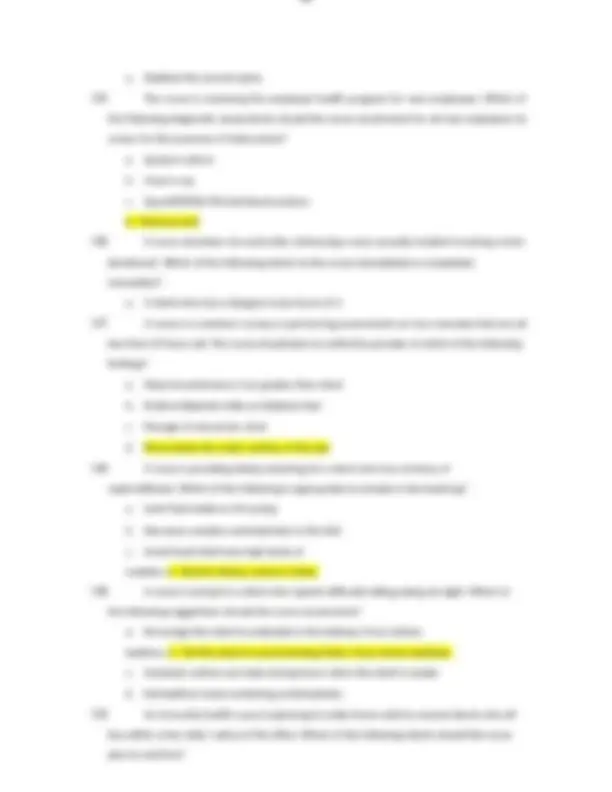
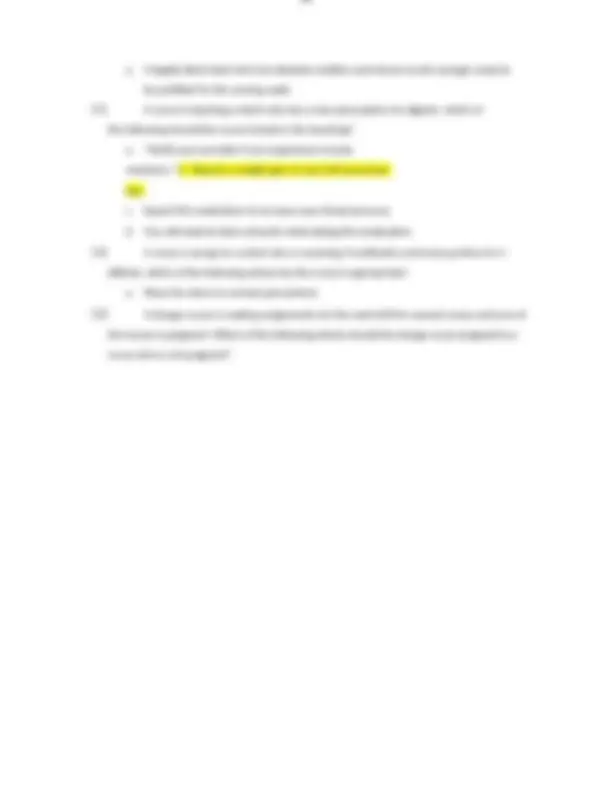
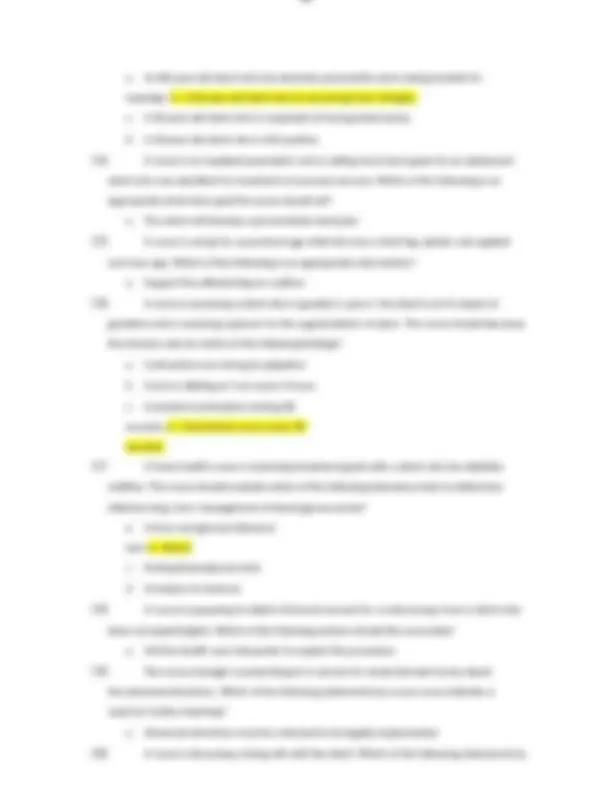
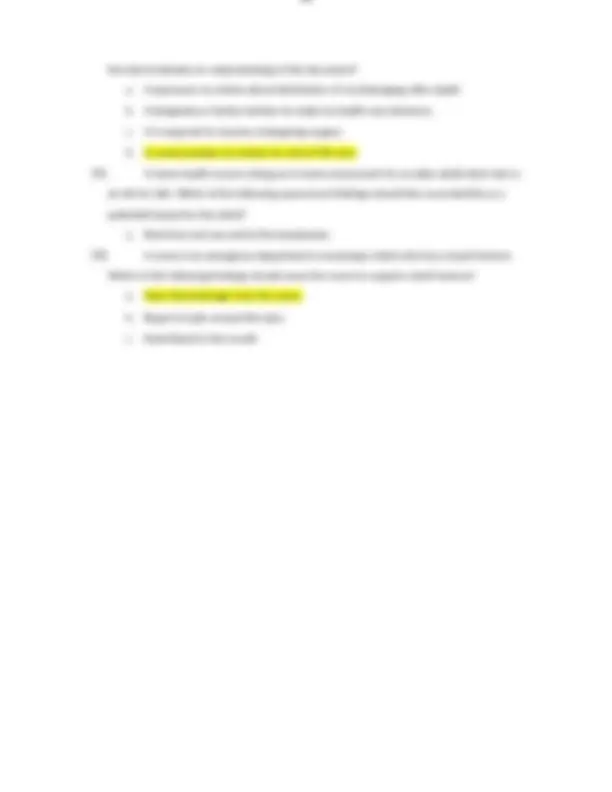
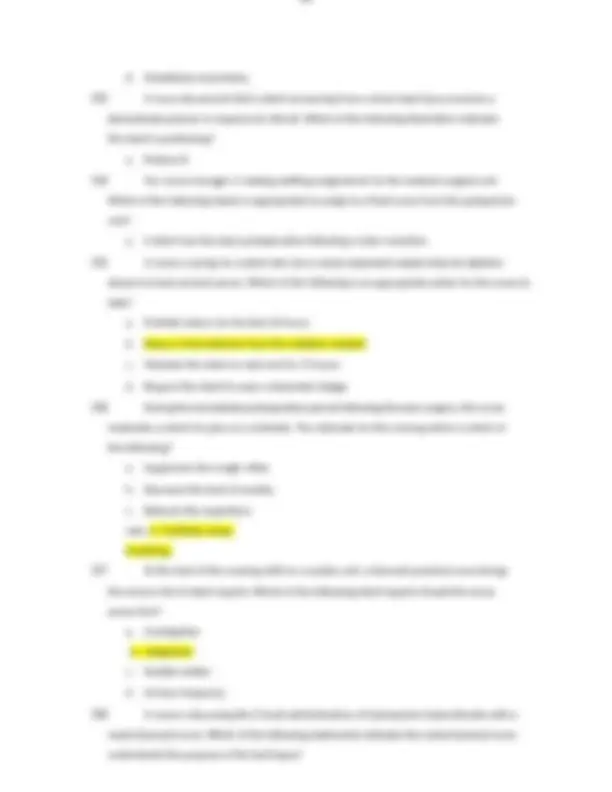
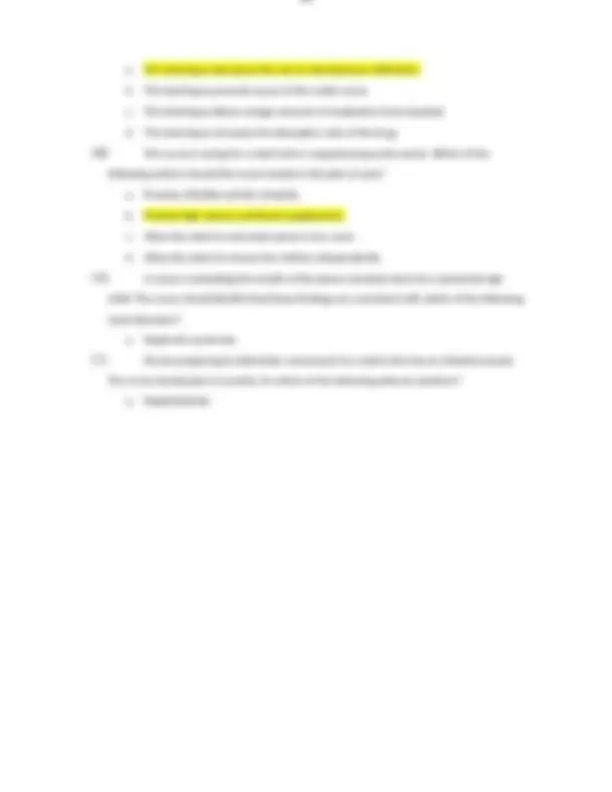
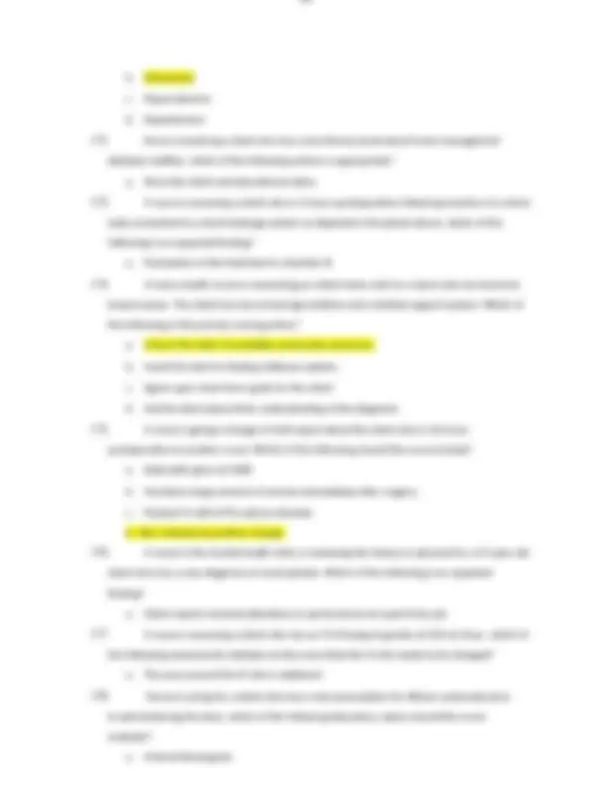
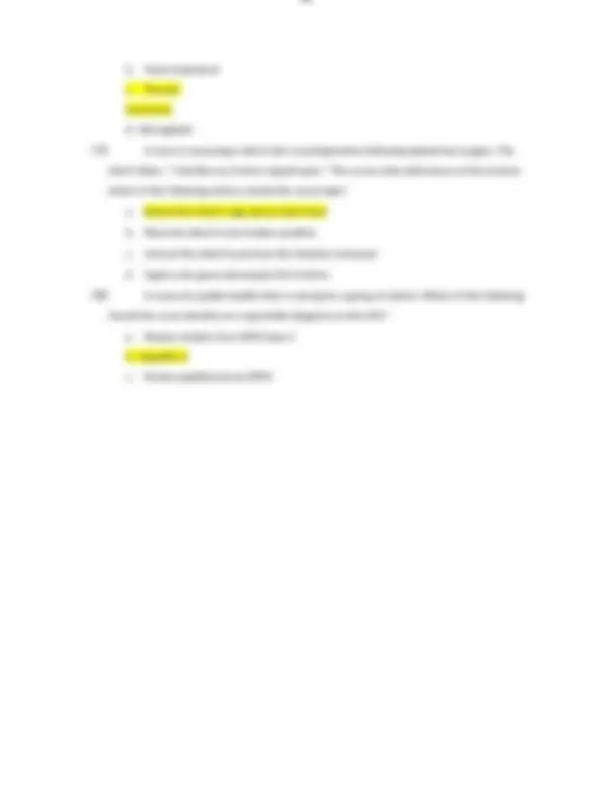
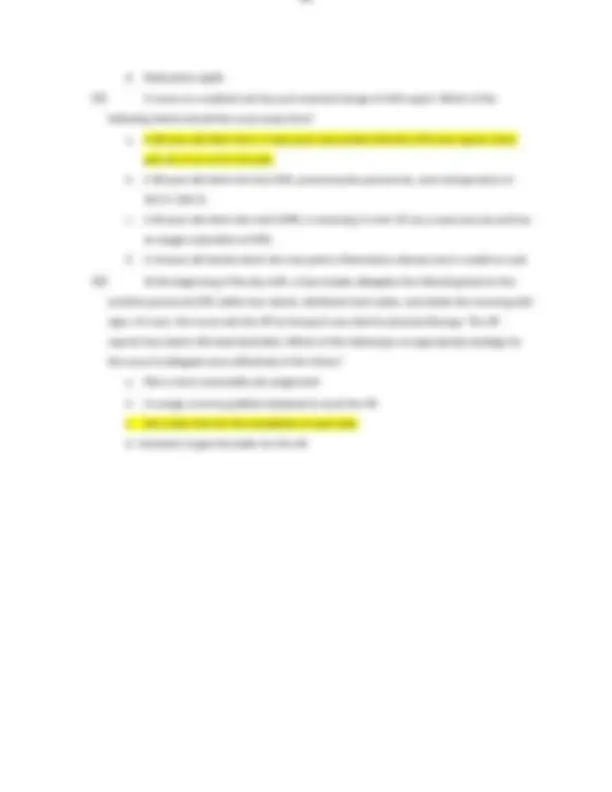


Study with the several resources on Docsity

Earn points by helping other students or get them with a premium plan


Prepare for your exams
Study with the several resources on Docsity

Earn points to download
Earn points by helping other students or get them with a premium plan
Community
Ask the community for help and clear up your study doubts
Discover the best universities in your country according to Docsity users
Free resources
Download our free guides on studying techniques, anxiety management strategies, and thesis advice from Docsity tutors
1. A community health nurse is evaluating eligibility for home assistance for a client who is quadriplegic. Which of the following actions should the nurse perform first? a. Determine the client's living situation. b. Problem solved with the client. c. Offer community resources to the client. d. Assist the client with decision-making. 2. A nurse is discussing care with a newly licensed nurse for a client who practices Orthodox Judaism. Which of the following meals suggestions by the newly licensed nurse indicates a need for further teaching? a. Chicken breast and boiled potatoes. b. Carrot sticks and cottage cheese. c. Grilled cheese an Apple sauce. d. Roast beef and ice cream.
Typology: Exams
1 / 40

This page cannot be seen from the preview
Don't miss anything!

































c. Decrease the infusion rate to 75 mL/hour. d. Place the client in a left lateral position
following should the nurse plan to include in the teaching? a. Series for hepatitis vaccine is recommended to prevent viral hepatitis. b. Hepatitis B is transmitted by contaminated food. c. Chronic hepatitis can lead to renal cell cancer. d. Clients who have a history of viral hepatitis are unable to donate blood.
b. Let’s go see what activities are going on outside. c. Why shouldn’t I talk to you? You looked lonely. d. “You're curious why I am interested in you and not the others?”
of child abuse? a. A 9-month-old Infant who is dressed inappropriately for the current weather conditions.
a. Demonstrate how to perform the procedure.
d. Jugular vein distention.
a. Allopurinol